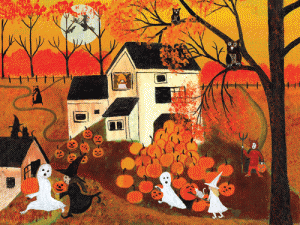No one has (as of yet) formally authored a “Basic guide to social network communication”, but there are volumes there that are waiting to be written. Unfortunately, those who need to read that typ of enlightening document the most won’t bother unless it is sent to them in 144 characters or less. Narrative, and by that I mean strong story arc narrative, may still exists in cyberspace, but it is generally so chopped up and fragmented that it becomes little more than impressionistic glimpses into the mundane lives of our “friends”. What is ironic about this shift in communication is that it may have more to do with a type of poor editing that is occurring in a social networking environment and not entirely to do with poor content. I would like to look at 3 narrative examples for discussion.
The Silent Film
When your palette is limited, your narrative has to be stronger. Conversely, if you have a robust arsenal of “flash” you can get by (for a little while) with poor narrative. Consider the story telling and interest generated by both early silent films and contemporary quality cinematic movies. What every one of them needs absolutely is a good narrative in order to have any hope at being successful in the long run. Certainly, there is the influx of interest when there is a new technology employed. Just as there were throngs of people standing in line to see the spectacle of early filmmaking, and record breaking crowds standing to see the midnight showing of films like Avatar, it all fades very quickly if there is not the internal narrative to back up the smoke and mirrors. We are drawn to narratives because they intrinsically lead us somewhere and we gain as travelers on that road. Unfortunately, we can be easily tricked into thinking that we were on a journey of story, when all that we actually were involved in was a short lived technological flash in the pan. And that can be the case whether you film is a century old artifact, or the latest 3D extravaganza.
So, if good narrative is that important, what makes a good narrative?
Folk Art
Folk art is at its core an exercise in narrative. I will refrain from leaning too heavily into a discussion on high art vs. craft, but in this case, folk art illustrates the idea of narrative well. The specific genre remains potent in American culture because of the way that it can infuse the nature of the creators and their story with that of the viewer. It tells us something about the people who made it in a personal way that other art forms do not. That information we interpret as narrative and we are invited to add ourselves into the stream of that narrative. Folk art offers very specific looks into the culture that we may or may not understand fully, but we can appreciate because they are honest reflections of the specifics of the story teller. This helps makes for a strong narrative.
So, if narrative is important, and good narrative is about glimpses into the specifics of a story, then how are Facebook narratives failing?
Not all Facebook narratives are failing. But many more than should be, are. We can all think of one, two, or many of our friends who use their status updates more like journal entries than communication. You probably know that ones that I mean, but they generally leave you with the feeling like they were not really spoken to you (and let’s be honest, you probably didn’t even come to mind when the author hit POST). This type of flawed communication may not be the fault of the content, but rather a fault in editing on the part of the author. If social network posters can get past the flashy medium and ask themselves “What is the story that I am trying to tell” and then ask the second, but equally important question “is it specific or meaningful enough for anyone to connect with?”, then they may be well on their way to posting something that graduates from the realms of diary entry and gets closer to a content driven narrative.
The Haunted Castle

One Response to Saying Just Enough to Work: Film, Folk Art, and Facebook